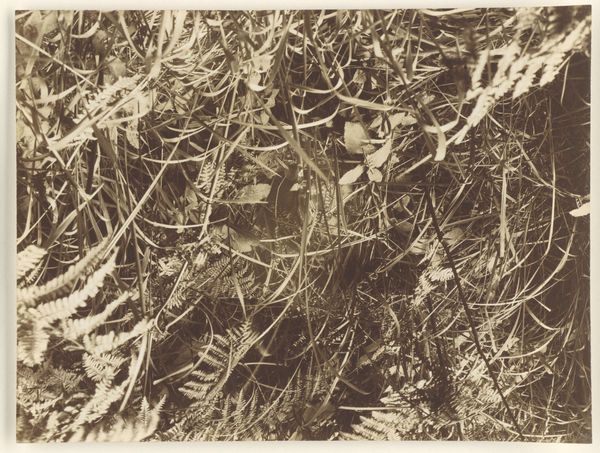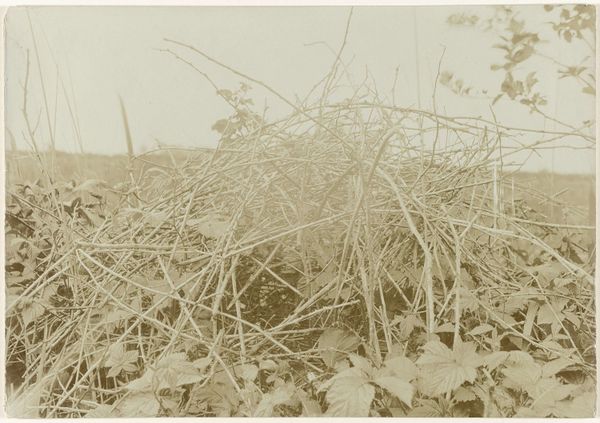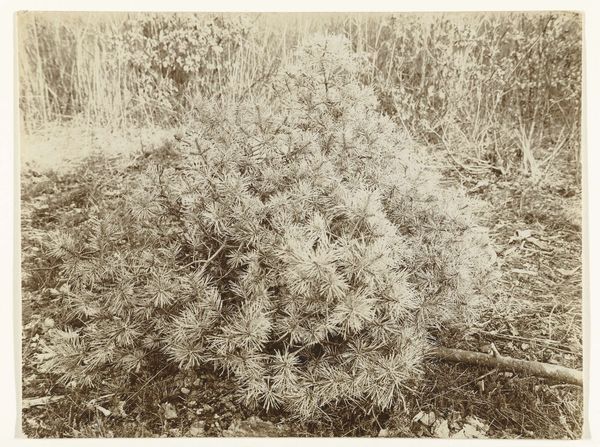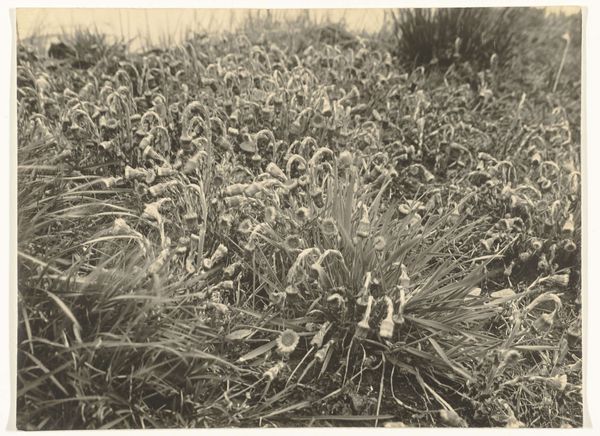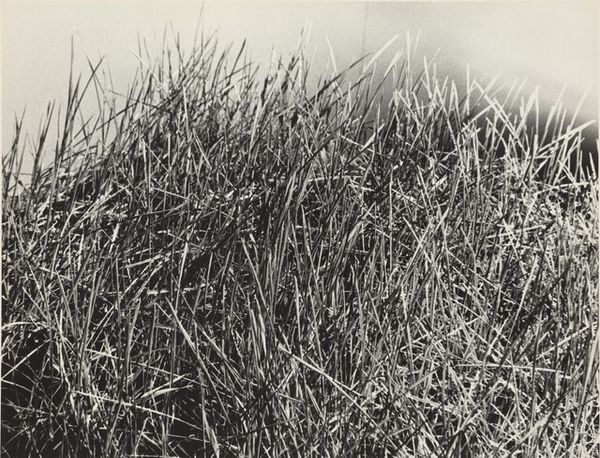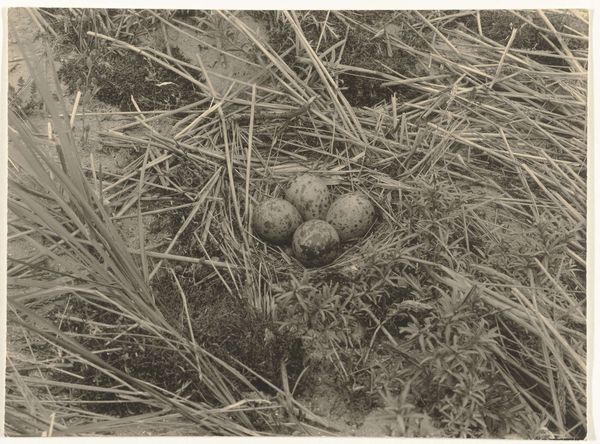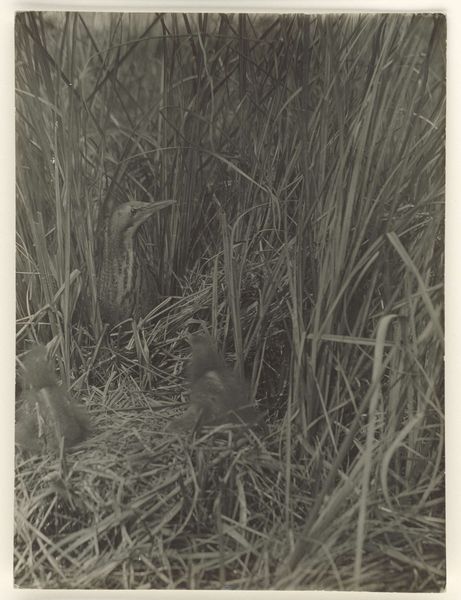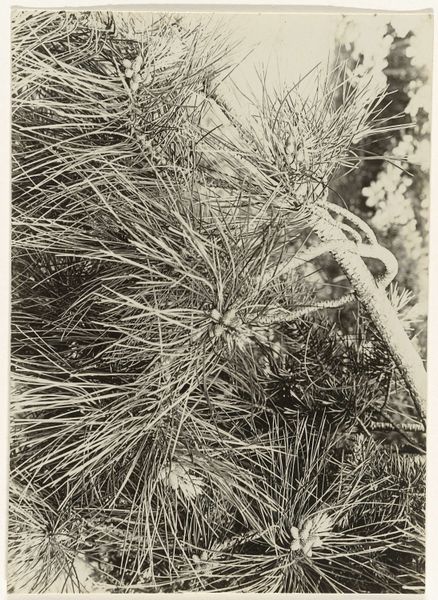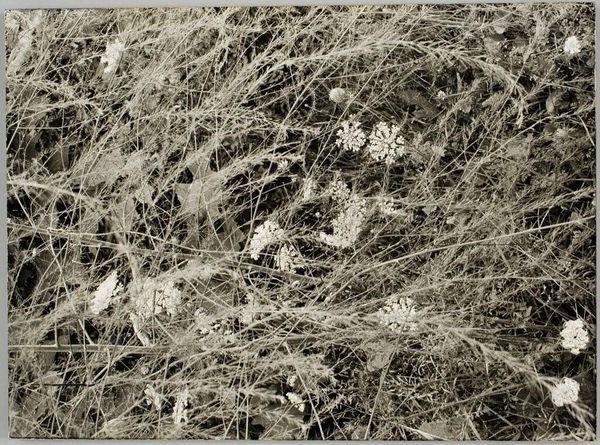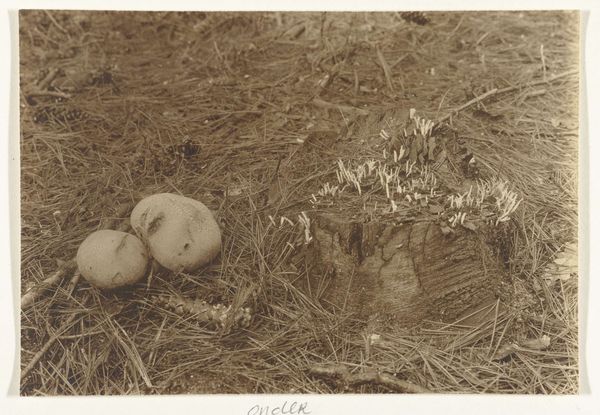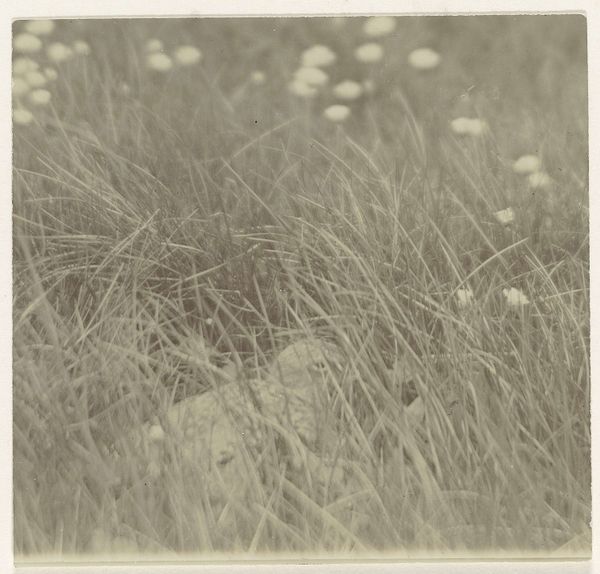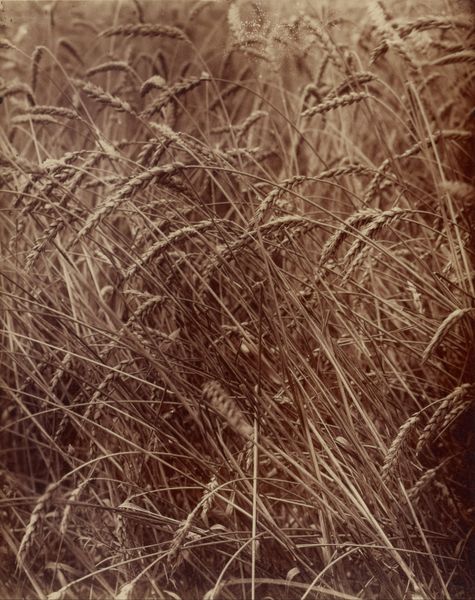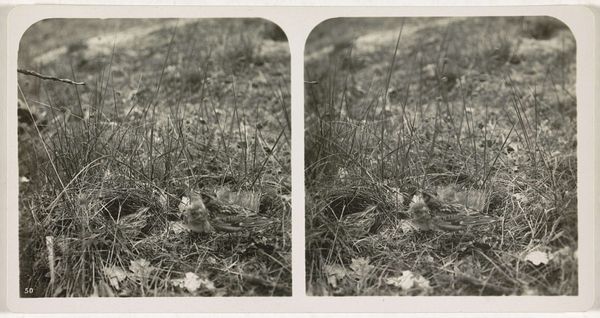
photography
#
still-life-photography
#
natural shape and form
#
organic
#
mother nature
#
natural formation
#
organic shape
#
landscape
#
nature colouring
#
photography
#
abstract nature shot
#
natural texture
#
natural palette
#
naturalism
#
organic texture
#
natural form
Dimensions: height 120 mm, width 166 mm
Copyright: Rijks Museum: Open Domain
Curator: Richard Tepe’s photograph, “Gele knolzwam,” captured sometime between 1900 and 1930, presents a fascinating study in natural form. Editor: It's oddly… unsettling. The subdued tonality, the sharp, almost crystalline forms of the fungi juxtaposed against the softness of the surrounding flora. It evokes a slightly alien landscape. Curator: The composition directs the eye. Note how the varying textures of the leaves and blades of grass converge toward the focal point: the fungi themselves. The shallow depth of field emphasizes this visual hierarchy. Editor: And the fungi themselves—what do they symbolize? They strike me as emblems of hidden forces within nature: decay, regeneration, the unseen life beneath the surface. It's all caught in this amber tone that feels timeless and vaguely unsettling. Curator: Indeed, there's a palpable tension between representation and abstraction. While clearly depicting these organic forms, the tonal range, the focus, and the perspective push the photograph beyond simple mimesis. Tepe presents, above all else, an orchestration of tonal values and textural contrasts. Editor: Perhaps that’s it; it calls to mind similar early photography capturing microscopic specimens or even anatomical displays. It seems intent to portray that moment we see the natural world both beautifully familiar, and profoundly, disturbingly other. The light catches just right and suddenly there’s more complexity than we thought possible. Curator: Well put! It is a convergence between meticulous observation and, as you noted, symbolic representation. The formal tension invites deeper contemplation of natural systems. Editor: It invites wonder, for sure. Curator: For me, the beauty of its carefully balanced elements, renders this work, endlessly stimulating.
Comments
No comments
Be the first to comment and join the conversation on the ultimate creative platform.
